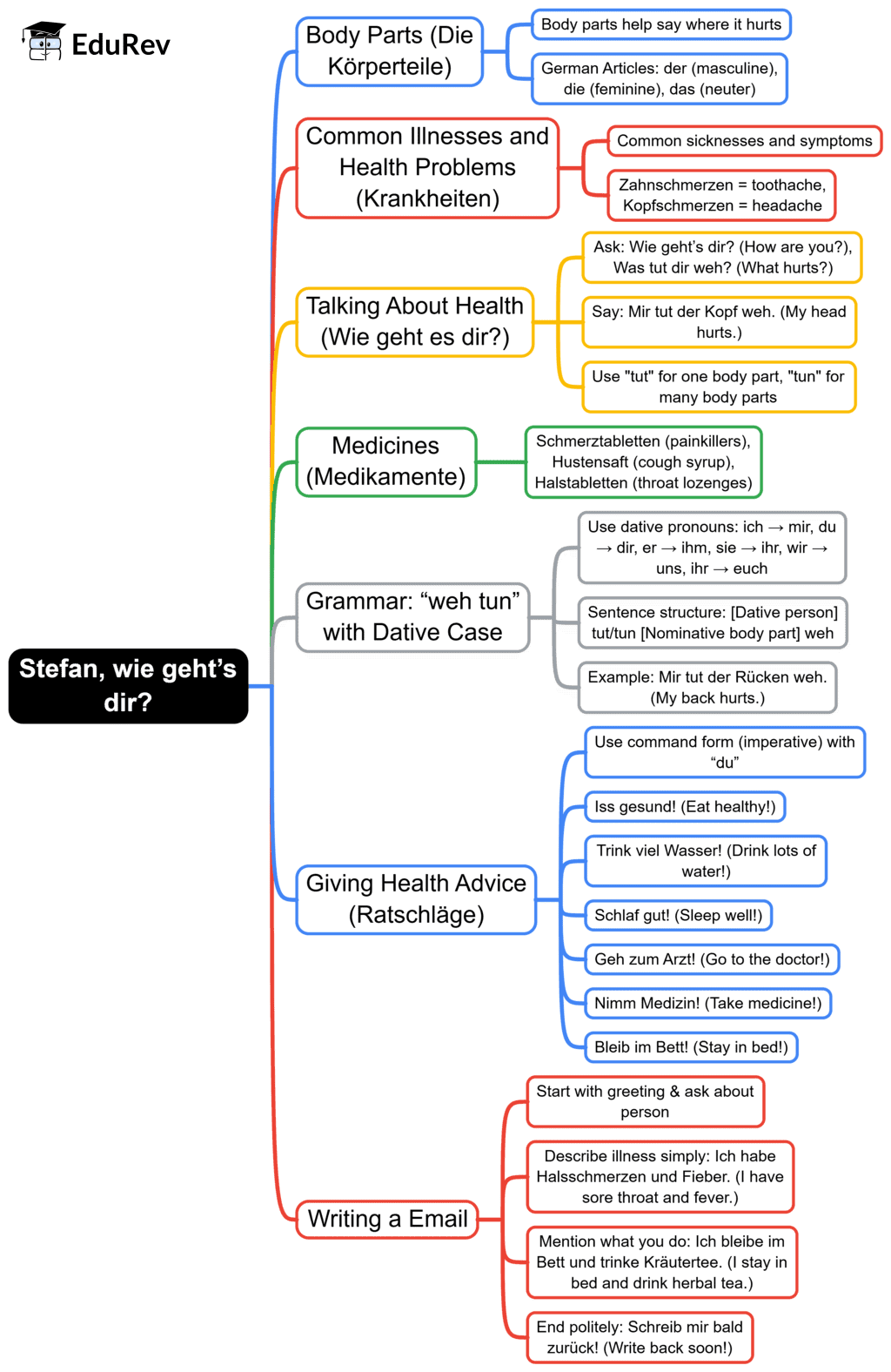Class 8 Exam > Class 8 Notes > Learn German (Hallo Deutsch 3) > Mind Map: Stefan, wie geht’s dir?
Mind Map: Stefan, wie geht’s dir? | Learn German (Hallo Deutsch 3) - Class 8 PDF Download

The document Mind Map: Stefan, wie geht’s dir? | Learn German (Hallo Deutsch 3) - Class 8 is a part of the Class 8 Course Learn German (Hallo Deutsch 3).
All you need of Class 8 at this link: Class 8
|
20 videos|12 docs|6 tests
|
FAQs on Mind Map: Stefan, wie geht’s dir? - Learn German (Hallo Deutsch 3) - Class 8
| 1. What is the significance of asking "Stefan, wie geht’s dir?" in a conversation? |  |
Ans. The phrase "Stefan, wie geht’s dir?" translates to "Stefan, how are you?" in English. It is a common greeting in German-speaking cultures, used to show interest in someone's well-being and to initiate conversation. This question fosters a sense of connection and can lead to more in-depth discussions about personal feelings or experiences.
| 2. How do you respond to "Stefan, wie geht’s dir?" in German? |  |
Ans. A typical response to "Stefan, wie geht’s dir?" could be "Mir geht's gut, danke!" which means "I am good, thank you!" Other variations could include "Es geht mir schlecht" (I am not well) or "Ich bin müde" (I am tired), depending on how the person is feeling at the moment.
| 3. What are some common follow-up questions after greeting someone like "Stefan, wie geht’s dir?" |  |
Ans. After asking "Stefan, wie geht’s dir?", common follow-up questions might include "Was hast du heute gemacht?" (What did you do today?), "Wie war dein Wochenende?" (How was your weekend?), or "Gibt es etwas Neues?" (Is there anything new?). These questions keep the conversation flowing and show genuine interest in the other person's life.
| 4. Why is it important to know how to greet someone in their native language, like German? |  |
Ans. Knowing how to greet someone in their native language, such as German, is important as it demonstrates respect for their culture and can help build rapport. It creates a friendly atmosphere and can make the other person feel valued and understood, enhancing communication and relationships.
| 5. Can "Stefan, wie geht’s dir?" be used in formal settings, or is it more casual? |  |
Ans. "Stefan, wie geht’s dir?" is generally considered a casual greeting and is best used among friends, family, or peers. In formal settings, one might opt for a more respectful greeting, such as "Wie geht es Ihnen?" which translates to "How are you?" in a respectful tone.
Related Searches
















